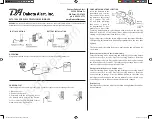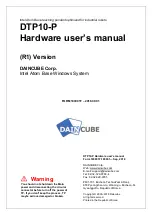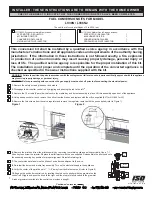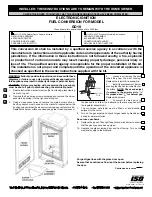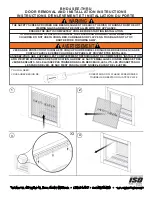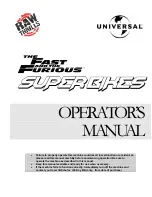
Page 1/3
FAFNIR GmbH
⚫
Schnackenburgallee 149 c
⚫
22525 Hamburg
⚫
Tel.: +49 / (0)40 / 39 82 07-0
⚫
www.fafnir.de
⚫
Instructions in accordance with directive 2014/34/EU
TÜV 00 ATEX 1656
X
Overfill Prevention Sensor type 81 D-Ex
…
and 83 UV-
…
Level Detector type LS 300
…
High-Level Sensor type SEPARIX-T
…
Stand: 09.2018
I
Range of application
The sensors are intrinsically safe operating equipment for use in explosion hazardous area and serve for
detecting the limit level. The overfill prevention sensors serve as part of a overfill prevention device. The
level detector is used as part of an overfill protection device, dry run protection or filling control. The
high-level sensor is used to detect a fluid back pressure within a light liquid separator.
II
Standards
The sensors are designed in accordance with the following European standards
EN 60079-0:2012 + A11:2013
Equipment
–
General requirements
EN 60079-11:2012
Equipment protection by intrinsic safety "i"
EN 60079-26:2015
Equipment with Equipment Protection Level (EPL) Ga
III
Instructions
for safe …
III.a
…
use
The sensors are designed as intrinsically safe equipment and are suitable for use in potentially explosive
areas. The level detectors LS 300
…
C (coated with plastic) are suitable for the gas groups IIA and IIB. All
other level detectors are suitable for all gas groups (IIA, IIB and IIC).
The approval applies to device versions 81 D-Ex
…, 83
UV-
…, LS
300
… and SEPARIX
-T
…
III.b
…
assembling and dismantling
Assembling and dismantling must solely be carried out with the power disconnected!
For sensors with connection housing the cover of the connection housing may be removed for the
electrical installation. After installation, the connection housing must be locked again.
III.c
…
installation
The wiring must be carried out only with the power disconnected. Special rules and regulations, includ-
ing EN 60079-14 and local installation regulations, must be observed.
The sensors can be installed completely inside Zone 0. If the integrated overvoltage protection is used,
e.
g. LS 300 U, the terminal compartment with overvoltage protection must be installed outside Zone 0.
General information (see also EN 60079-14:2014, Clause 16.3 or EN 60079-25:2010, Clause 12):
The overvoltage protection device must be installed outside, but as close to the border of Zone 0 as
technically possible, preferably at a distance of up to 1 m.
If a screw-in unit is used, it must be provided with a suitable sealing material and screwed into the tank
coupling. If the sensor tube is permanently connected with a flange, the installation length cannot be
changed. The flange shall be provided with a suitable seal and fixed with flange bolts or nuts.
By the process connection, there may be an opening in the boundary wall to the area requiring EPL "Ga".
Then, there is the risk of flammable gases release and flame entrance.
If the sensor is supplied without process connection, the installer is responsible for compliance with the
EX requirements.
General information (see also EN 60079-26, Clause 4.3):
Attention must be paid, if the sensor is installed in the separating wall between Zone 0 and Zone 1.
Then a protection class of at least IP66 or IP67 must be achieved after installation.




